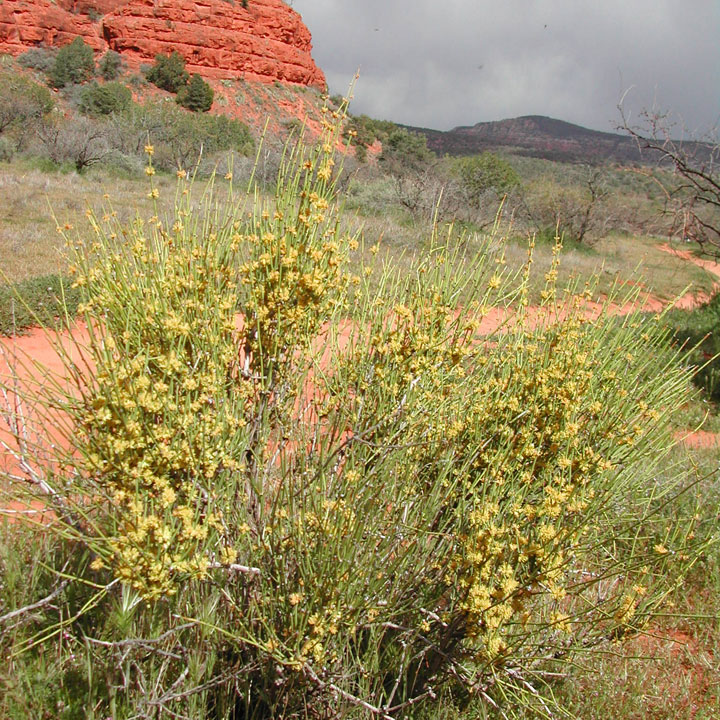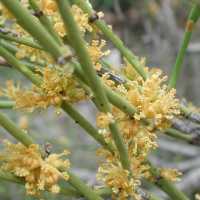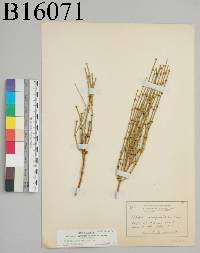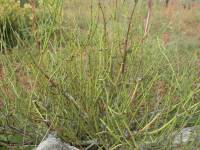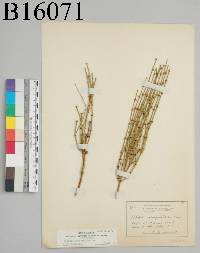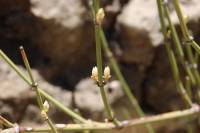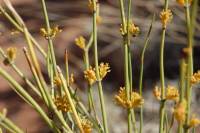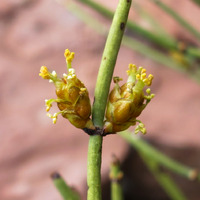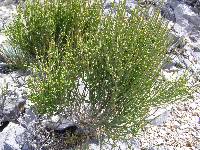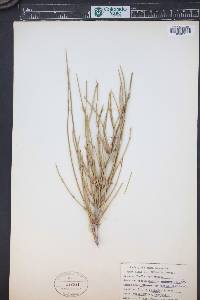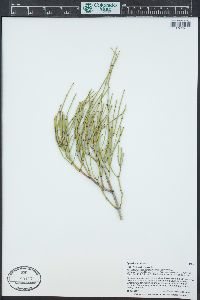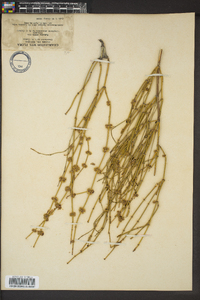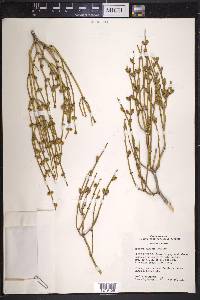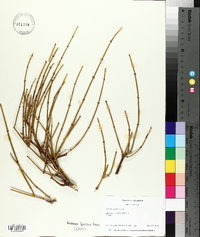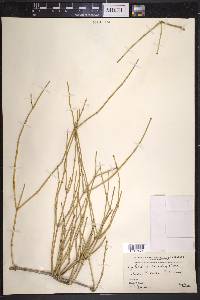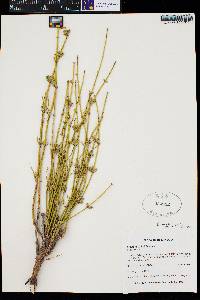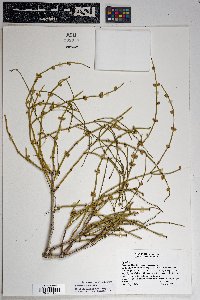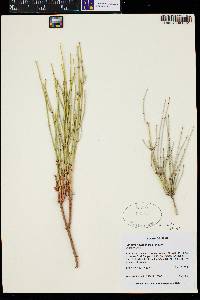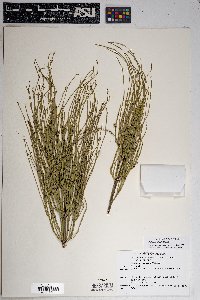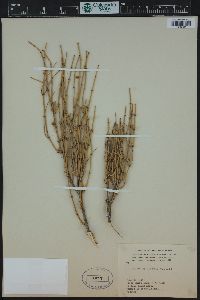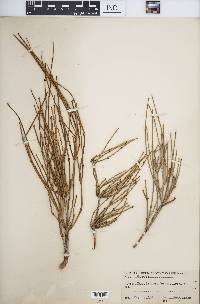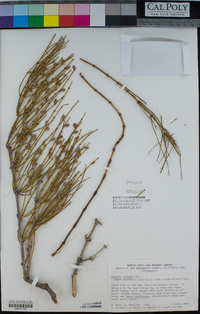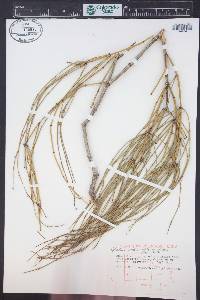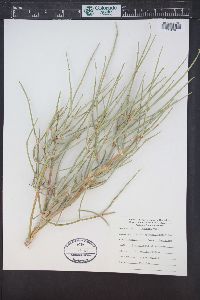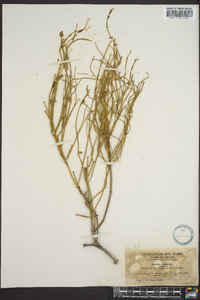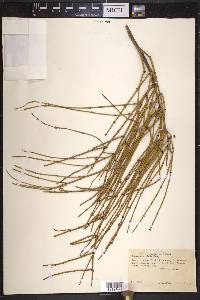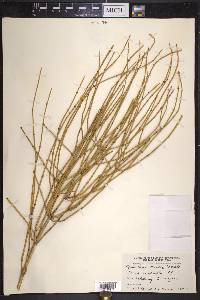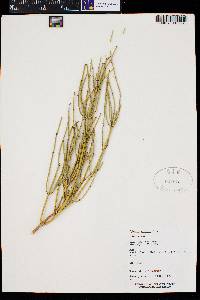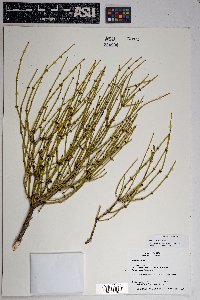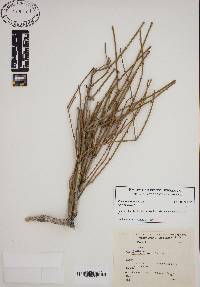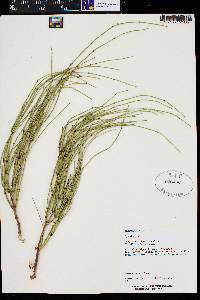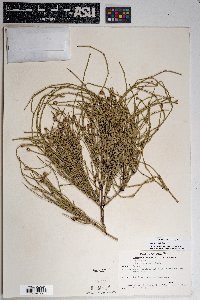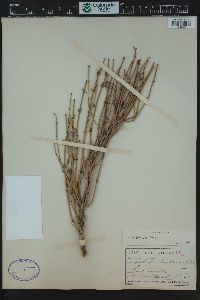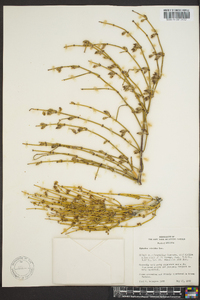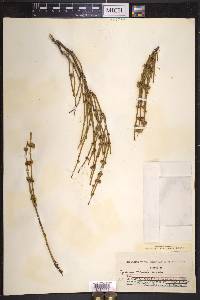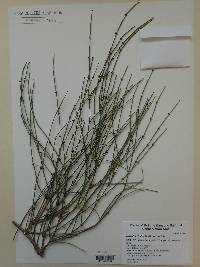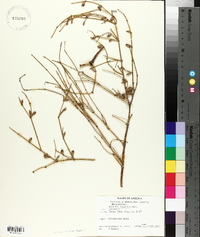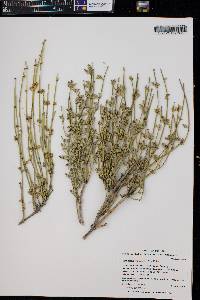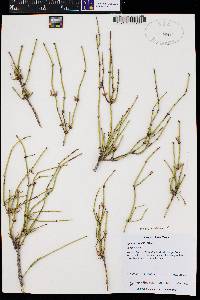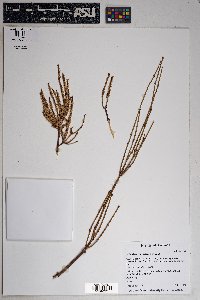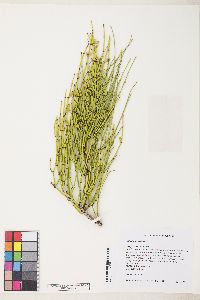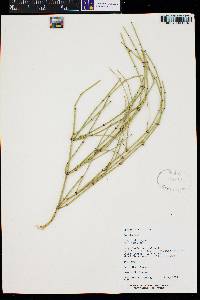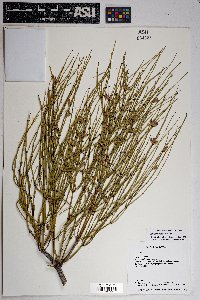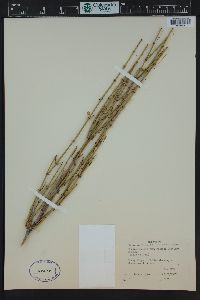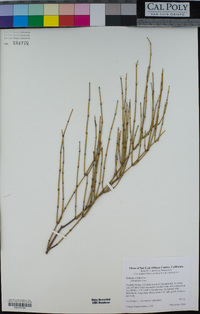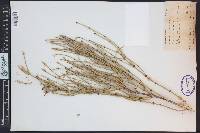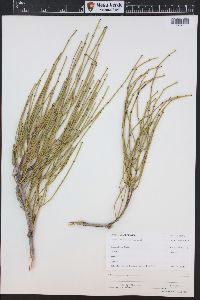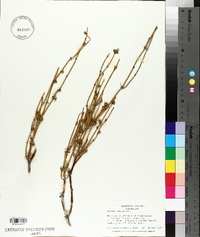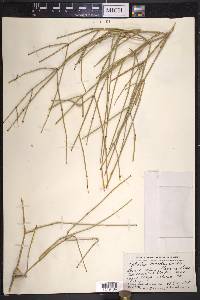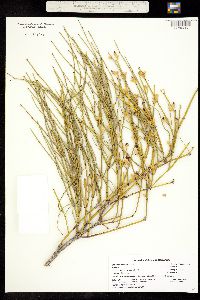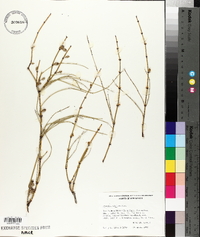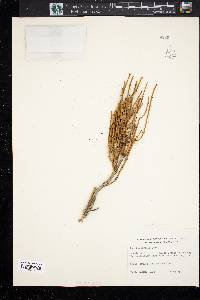Ephedra viridis
|
|
|
|
Family: Ephedraceae
mormon tea, more...Mormon-Tea, green ephedra, green Mormon tea
|
Shrubs erect, 0.5--1 m. Bark gray, cracked and irregularly fissured. Branches alternate or whorled, rigid, angle of divergence about 30°. Twigs bright green to yellow-green, becoming yellow with age, not viscid, ridges between longitudinal grooves barely papillate, smooth; internodes 1--5 cm. Terminal buds conic, 1--2 mm, apex obtuse. Leaves opposite, 2--5 mm, connate to 1/2--3/4 their length, not photosynthetic; bases thickened, brown, persistent, becoming hard, enlarged, and black; apex setaceous. Pollen cones 2--several at node, obovoid, 5--7 mm, sessile; bracts opposite, 6--10 pairs, light yellow and slightly reddened, ovate, 2--4 × 2--3 mm, membranous, slightly connate at base; bracteoles slightly exceeding bracts; sporangiophores 2--4 mm, 1/4--1/2 exserted, with 5--8 sessile to nearly sessile microsporangia. Seed cones 2--several at node, obovoid, 6--10 mm, sessile or on short, scaly peduncles; bracts opposite, 4--8 pairs, ovate, 4--7 × 2--4 mm, membranous or papery, with yellow center and base, margins entire. Seeds 2, ellipsoid, 5--8 × 2--4 mm, light brown to brown, smooth. 2 n = 28. Coning spring. Dry rocky slopes and canyon walls; 800--2500 m; Ariz., Calif., Colo., Nev., N.Mex., Oreg., Utah, Wyo. FNA 1993, Heil et al. 2013, Allred and Ivey 2012, Carter 2012 Common Name: mormon tea Duration: Perennial Nativity: Native Lifeform: Shrub General: Erect to spreading shrubs, 50-100 cm tall, with jointed bright green to yellow-green stems which become yellow with age; bark on older stems gray, cracked and irregularly fissured; branches rigid, soltary or whorled at nodes, with an angle of divergence of about 30°. Needles: Leaves reduced to small brown scales, 2-5 mm long, 2 per node, connate (united) for 1/2 to 3/4 of their length; bases thickened and brown, becoming hard, enlarged, and black, and persisting on the stems. Cones: Dioecious (with male and female cones on separate plants); pollen (male) cones 2 to several per node, obovoid, 5-7 mm long, sessile, wrapped in 6-10 pairs of membraneous light reddish-yellow bracts, 2-4 mm long; seed (female) cones 2 to several per node, obovoid, 6-10 mm long, sessile or on short, scaly peduncles, wrapped in 4-8 pairs of ovate bracts, 4-7 mm long and 2-4 mm wide, papery with a yellow center and base. Seeds: Seeds 2 per female cone, ellipsoid, 5-8 mm long and 2-4 mm wide, light brown to brown. Ecology: Found on dry sandy and rocky slopes, from 2,500-8,500 ft (762-2591 m); cones form in springtime. Distribution: OR, CA, NV, WY, UT, AZ, NM, CO Notes: Ephedra is an incredibly distinct genus, found throughout the American West and as far south as South America. They are much-branched shrubs with jointed, green stems and leaves that are reduced to tiny brown scales which can be found in pairs or sets of 3 at the stem nodes. E. viridis is distinguished by its leaves (tiny brown bracts) in sets of 2 per node, with the thickened leaf bases leaving a distinctive black collar on the stems; and the gray bark on the lower stems. Ephedra coryi also has leaves in pairs with persistent dark leaf bases, but that species is resticted to Texas and extreme southeastern New Mexico, has red-brown bark, and grows in rhizomatous clumps. Some authorities (including the Four Corners Flora, 2013) consider Ephedra cutleri to be a subspecies of E. viridis, under the synonym E. viridis var. viscida. FNA (1993) and Allred and Ivey (2012) consider E. viridis and E. cutleri to be separate species; this description follows those sources. E. culteri differs by having sticky-viscid stems and growing in large rhizomatous patches in sand dunes. It is restricted to the four-corners region. Ethnobotany: A tea is made from steeping the stems in boiling water, and the seeds may be roasted and eaten. The stems contain high concentrations of tannin and were used to treat intestinal ailments. Etymology: Ephedra is the ancient Greek name for Hippuris (mare's tail, in Plantaginaceae), a plant that Ephedra somewhat resembles; viridis means green. Editor: AHazelton 2017 |
|
|
|

